
Apple Vision Pro is a first-generation Apple product that we don’t see very often, but it is an augmented reality or virtual reality headset with a bunch of cameras and sensors inside that straps to your face.
But, most importantly, this is a standalone computer with an M2 chip inside, its own WiFi connection, a roughly 4k micro-OLED display for each eye, a set of speakers right above each ear on the band, and then a dedicated new R1 chip, which is doing all of the real-time processing from all of the sensors that make this headset pretty special.
How does it work?
Basically, we’ve seen VR and AR headsets before. There is usually a screen on the inside and then some sort of shell on the outside, which has some sensors on the outside that help detect what is in the room around you and let you see the controllers in your hands. But there are no controllers on this particular one. They are not producing any for it. There will be no alternative accessories. They’re not even going to design controllers. You have full control over this thing with your hands, eyes, and voice.
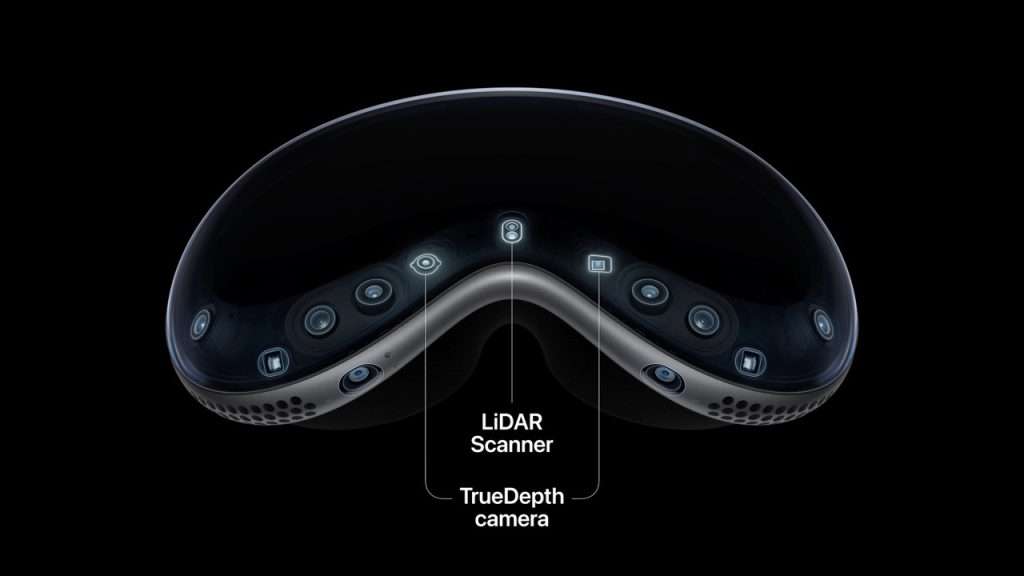
So, you put this headset on, and basically all over the headset there are an absolute ton of sensors. You have two main forward-facing cameras (IR illuminators and side cameras), two downward-facing cameras, two more cameras for the sides, two infrared illuminators, a LiDAR scanner, and a true-depth camera. These are all to keep track of what’s happening around the headset and also to track your hands in front of your face.
Then, on the inside, there are a bunch of infrared illuminators and infrared cameras that are just there to track your eye movement. So there is a setup procedure. Before you even get the headset, you basically measure or scan your face with the True Depth camera on the iPhone, and it utilizes that depth information to build you a personalized cutout. This is a procedure that will be available at Apple shops.
Zeiss lenses
You can get the headset with a custom cutout for your face. If you have glasses, there are some Zeiss lenses. But you finally get the headset out and put it on, and there’s some nice meshing on the back, some fabric that stretches and is pretty breathable. It’s built extremely well with all this metal and glass. And then, once you get it going, the most impressive thing about this headset, the most impressive thing is its eye tracking.
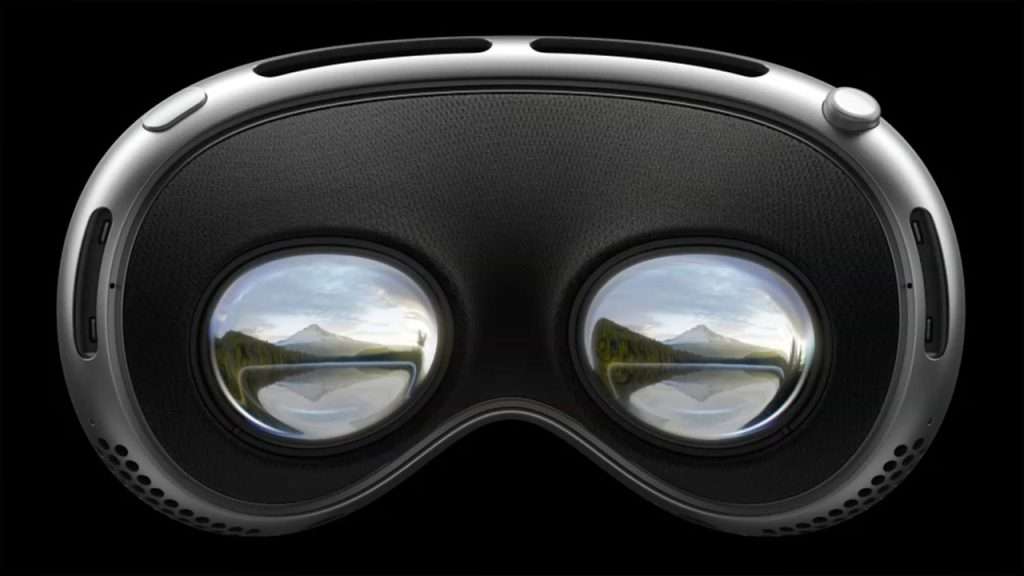
Impressive Eye Tracking Technology
So, basically, the eye tracking on this headset, which looks at your eyes and maintains track of where your eyeballs move around, is the closest thing to magic that I’ve experienced. Any time you moved your gaze across the UI, it would highlight and select exactly what you were looking at, no matter how small the target was or what you were looking at. And then, if we want to select something, all we have to do is swipe our fingers together. That’s how it works. So you look at something clicking, something clicking, something clicking. As a result, there is a calibration procedure.
When you first set up the headset, you put it on for the first time, and you basically just look around with your eyes at a bunch of different dots so it learns your eyes. And then from that point on, you’re just cruising; you’re sailing through everything by just looking at things. You’re just sailing through everything by looking at things. And it feels like telepathy. You just look at something and select it, and that’s it.
So that’s how the entire UI works. Almost every other headset allows you to select items with your hands, but most of them rely on sensors on the outside to keep track of a pair of controls for optimum accuracy. However, the enormous array of sensors on the exterior of Apple’s headsets has done an incredibly good job of detecting what my hand is doing, regardless of where it is.
Privacy and Security

There’s also something called Optic ID, which is basically the headset’s fingerprint ID because the device looks at your eyes, and each eye has a distinct individual biometric pattern. You just simply put on the headset, and it looks at your eyes to log in. So, with Optic ID, this device genuinely recognizes your eyes. So, you’ve probably seen all these strange-looking frames where you can see people’s eyes through them, like this very weird thing I’ve never seen in any other headset. What’s going on here? It’s not, in fact, transparent. It appears to be a glass-transparent object, but it is not. It looks to be due to the appearance of the OLED screen facing out. This is what I would call a two-way passthrough, that’s what I’m calling it.
What does it do?
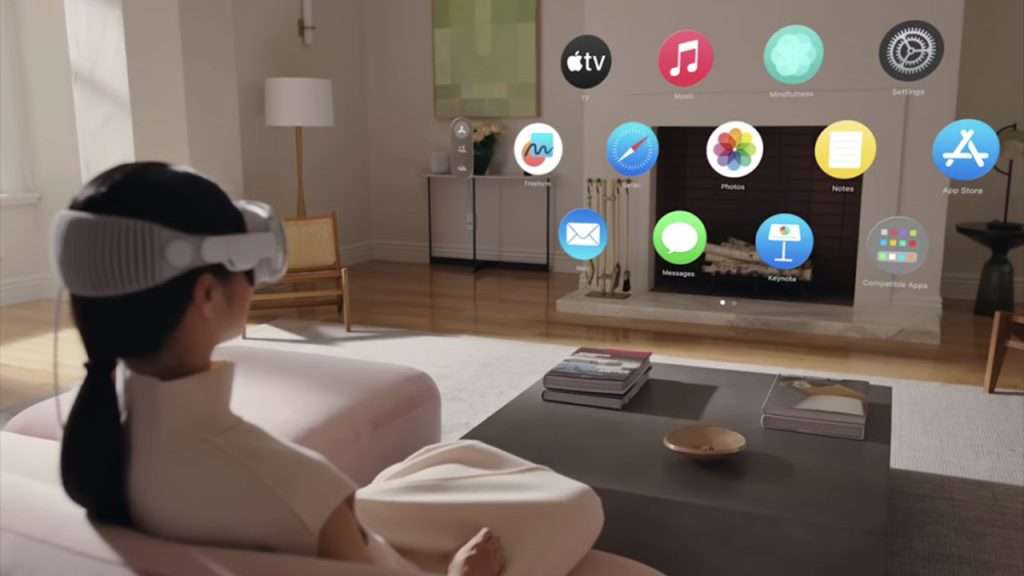
What exactly does it do? By saying that this is a first-generation product. So far, the only applications that appear on the home screen are those from Apple. It’s just Apple’s applications, much as when the first iPhone came out with no app store. But the reason this is coming out, or at least being announced so early, but it won’t be available until next year, is to give developers a window to start designing their own apps and generating great things for this headset to do that are more interesting and functional. It does, however, contain a core set of functionalities. So, for computers, this is the least likely to be utilized by most regular people. But it is a pretty direct shot at what Meta just did with the Quest Pro.
So, you can use this thing as its own computer, browsing the web and doing other things with the 4K windows in front of you that you can move around and do other things with your hands. It runs a completely new operating system called VisionOS. And it appears to be very similar to ipadOS.
Cool Stuff and Connecting to Mac
If you have a Mac and want to do MacOS stuff, you can apparently just look at your Mac with the headset on and it will pick up what you’re doing and mirror the max display as one of the 4K windows, and then you can even connect a Bluetooth keyboard and a Bluetooth track pad and start working around like it’s an actual Mac just with a headset’s bigger screen whenever you want
There is a digital crown on the side that actually lets you spin it clockwise to move with more immersion and fully envelop you in the VR environment. And then there was also this weird feature where you could take 3D photos and videos with the cameras built into the headset itself.
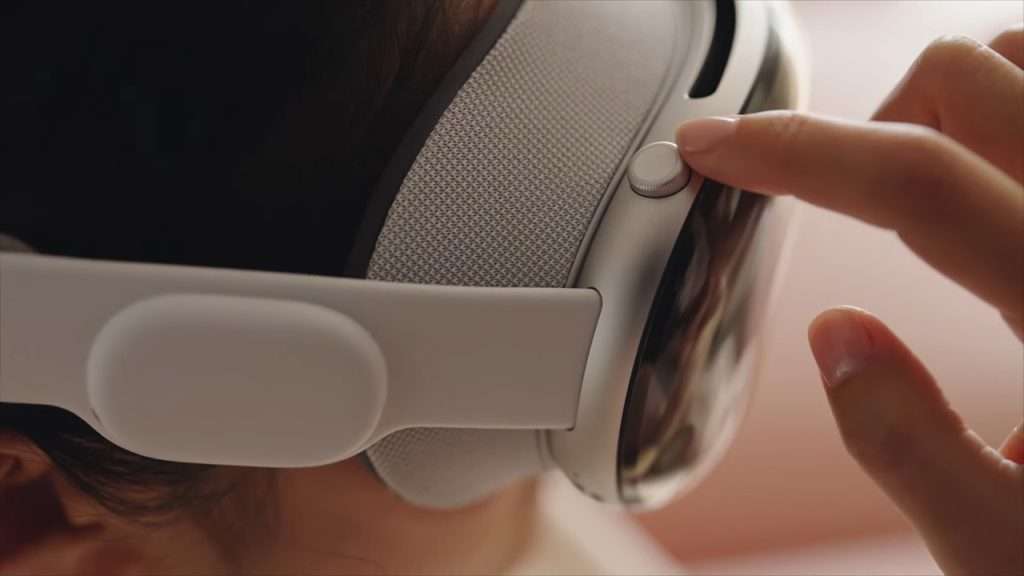
Is it actually any good?
Yeah, some of the features of this headset that I recognized are by far the finest I’ve seen in any VR headset, particularly the eye tracking and hand tracking. Of course, it will be up to the developers to truly make it good. But I think the basic information, such as how to utilize it, is fairly great.
But it doesn’t imply there aren’t some negative aspects. First of all, there were no haptics since there were no controls. Everything you do with your hands in the air There will be no other option except haptic feedback.
But, number two, this was remarkable; this is slightly heavy. Kind of the same way that AirPods Max, the apple’s metal headphones are heavier than most plastic headphones. There’s a reason why the majority of other VR headsets are made of plastic. It’s not because it’s cheap; it’s because it’s lightweight. And because this is a headset made up of metal and glass, it is a bit heavy.
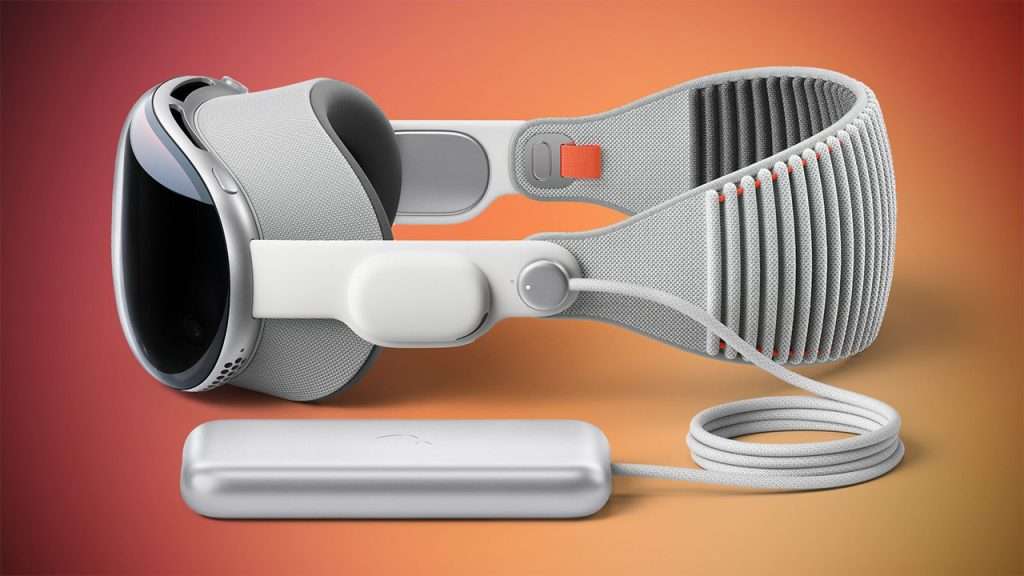
It is now also very well built. That’s also why the battery isn’t attached to it. That’s a lot of weight to carry on your head. As a result, they attached the battery via a proprietary cable, and it can now sit next to you on the couch or in your back pocket.
So, you know, I’ve got to give it a shot. It was quite stunning, in my opinion. But, in the end, this is not a product for the masses. So, that’s the Apple Vision Pro. For that moment, having Apple Vision Pro is a reach person’s toy and a developer’s dream. But we’ll have to wait and see how far this thing progresses in the near future. It will be released next year, which isn’t so far away.

Leave a Reply